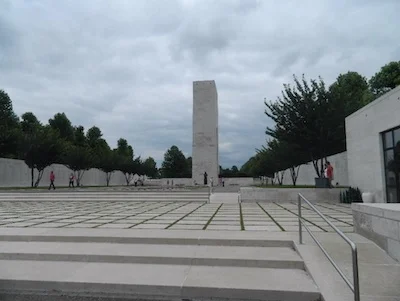Margraten, The Netherlands
Netherlands American Cemetery and Memorial
Dedicated 1960
The Netherlands American Cemetery and Memorial is the only American military cemetery in the Netherlands. It is operated and maintained by the American Battle Monuments Commission (ABMC), which is the guardian of U. S. overseas commemorative cemeteries and monuments. Occupying 65.5 acres of land in the village of Margraten, it is six miles east of the city of Maastricht.The cemetery site has a rich historical background, lying near the famous Cologne-Boulogne highway built by the Romans and used by Caesar during his campaign in that area. The highway was also used by Charlemagne, Charles V, Napoleon, and Kaiser Wilhelm II. In May 1940 Hitler’s legions advanced over the route of the old Roman highway, overwhelming the Low Countries. In September 1944, German troops once more used the highway for their withdrawal from the countries occupied for four years.
From the cemetery entrance, visitors are led to the Court of Honor with its pool reflecting the memorial tower. Stretching along the sides of the court are Tablets of the Missing on which are recorded 1,722 names. Rosettes mark the names of those since recovered and identified. Beyond the tower is a burial area divided into 16 plots, where rest 8,301 of our military dead, their headstones set in long curves. A wide, tree-lined mall leads to the flagstaff that crowns the crest.
Netherlands American Cemetery Superintendent Keith Stadler once explained the following about the cemetery: “We’re the only cemetery in the entire organization—the ABMC (we have 24 cemeteries)—where 100 percent of our graves have been adopted by local families. And these families, actually the entire region, feel so grateful still to this day that they adopt the graves and treat these soldiers as if they are their own family. They come out two, three, four times a year. They put flowers on the graves and they make a point of learning and researching as much as they can about the soldier as possible so they can feel that connection.”

